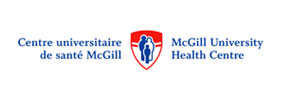Philippe Séguéla, PhD

Philippe Séguéla's group uses a multidisciplinary approach based on transgenic mouse models, optogenetics, chemogenetics, calcium imaging, electrophysiology as well as behavioural assays to elucidate the role of major ion channels/pain transducers (ex. ATP-gated P2X receptors, proton-gated ASICs, TRP channels) in somatosensory circuits. The Séguéla laboratory is investigating the functional organization of genetically identified neuronal networks mediating pain from peripheral afferents in sensory ganglia to the prefrontal cortex. His goal is to understand their contribution to pathological inflammatory and neuropathic states, in search of novel analgesic strategies.
Bernier L.-P., Ase R.A., Chevallier S., Blais D., Zhao Q., Logothetis D.E., Séguéla P. (2008) Phosphoinositides regulate P2X4 ATP-gated channels through direct interactions. Journal of Neuroscience 28 :12938-12945.
Bernier L.-P., Ase AR, Tong X, Hamel E, Blais D, Zhao Q, Logothetis D, Séguéla P. (2008) Direct modulation of P2X1 receptor-channels by the lipid phosphatidylinositol 4,5-bisphosphate. Molecular Pharmacology 53: 496-504.
Zhao, Q., Logothetis, D.E., Seguela, P. (2007) Regulation of ATP-gated P2X receptors by phosphoinositides. Eur. J. Physiol. 455:181-185.
Reboreda A., Raouf R., Alonso A.A. and Séguéla P. (2007) Development of cholinergic modulation and graded persistent activity in Layer V of medial entorhinal cortex. Journal of Neurophysiology 97:3937-3947.
Sharif Naeini, R., Witty, M.F., Séguéla, P., Bourque CW. (2006) An N-terminal variant of Trpv1 channel is required for osmosensory transduction. Nat Neurosci 9:93-98.






